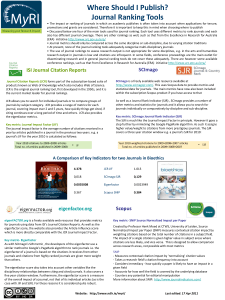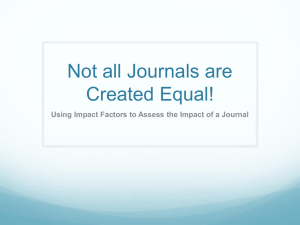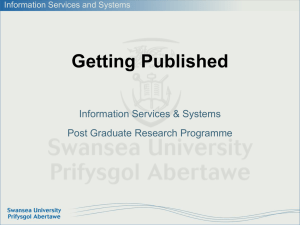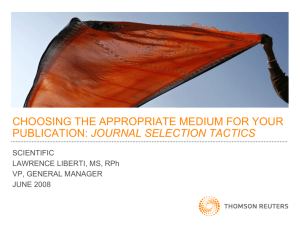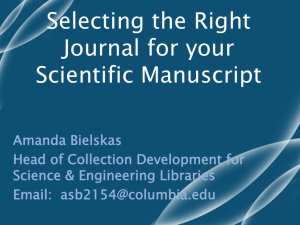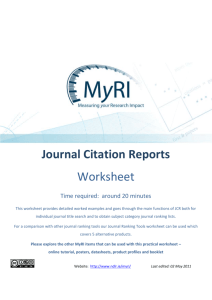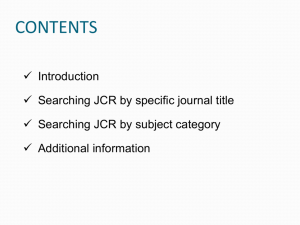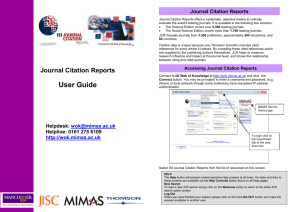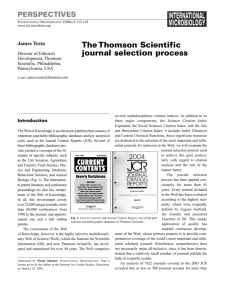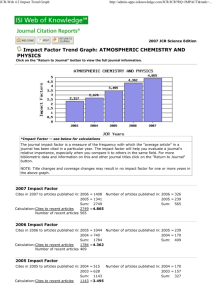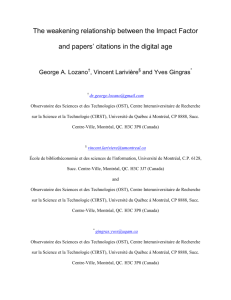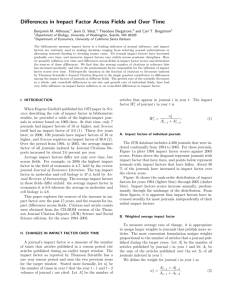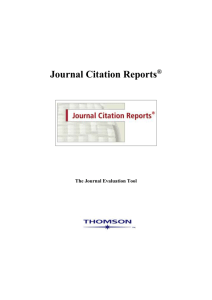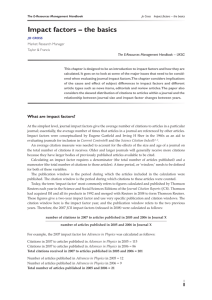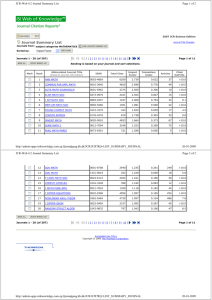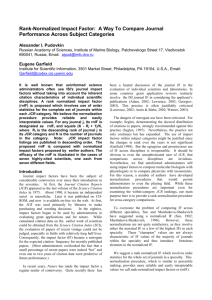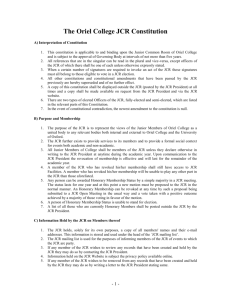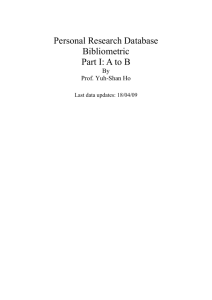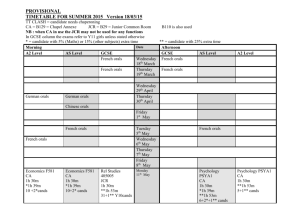Journal citation reports handout
advertisement
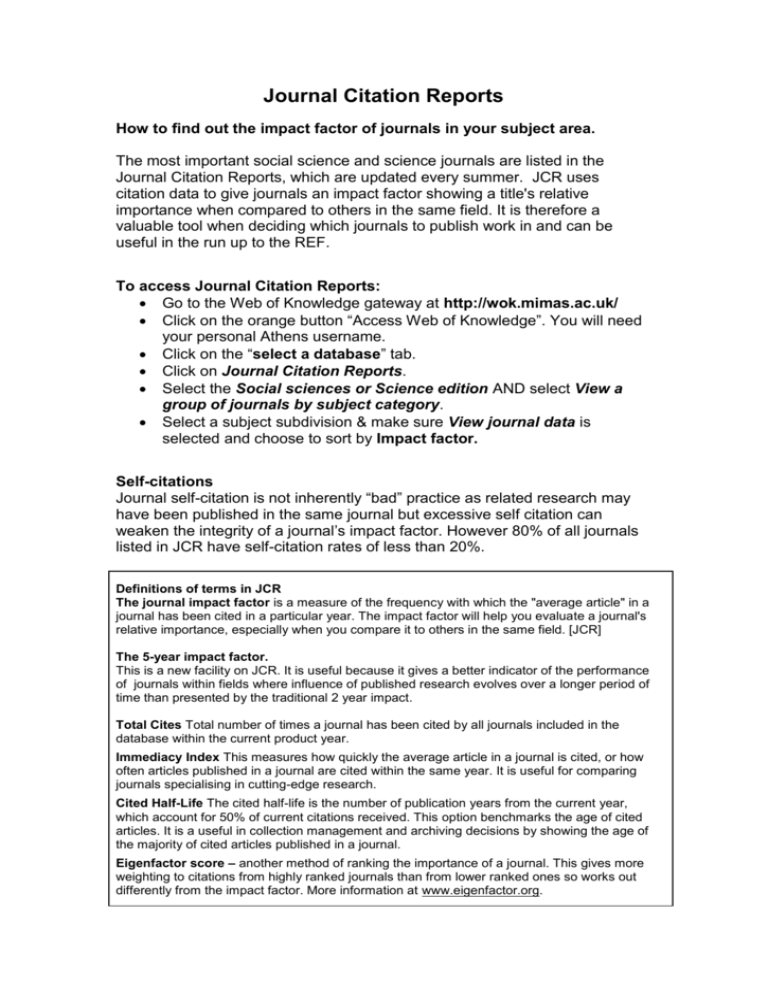
Journal Citation Reports How to find out the impact factor of journals in your subject area. The most important social science and science journals are listed in the Journal Citation Reports, which are updated every summer. JCR uses citation data to give journals an impact factor showing a title's relative importance when compared to others in the same field. It is therefore a valuable tool when deciding which journals to publish work in and can be useful in the run up to the REF. To access Journal Citation Reports: Go to the Web of Knowledge gateway at http://wok.mimas.ac.uk/ Click on the orange button “Access Web of Knowledge”. You will need your personal Athens username. Click on the “select a database” tab. Click on Journal Citation Reports. Select the Social sciences or Science edition AND select View a group of journals by subject category. Select a subject subdivision & make sure View journal data is selected and choose to sort by Impact factor. Self-citations Journal self-citation is not inherently “bad” practice as related research may have been published in the same journal but excessive self citation can weaken the integrity of a journal’s impact factor. However 80% of all journals listed in JCR have self-citation rates of less than 20%. Definitions of terms in JCR The journal impact factor is a measure of the frequency with which the "average article" in a journal has been cited in a particular year. The impact factor will help you evaluate a journal's relative importance, especially when you compare it to others in the same field. [JCR] The 5-year impact factor. This is a new facility on JCR. It is useful because it gives a better indicator of the performance of journals within fields where influence of published research evolves over a longer period of time than presented by the traditional 2 year impact. Total Cites Total number of times a journal has been cited by all journals included in the database within the current product year. Immediacy Index This measures how quickly the average article in a journal is cited, or how often articles published in a journal are cited within the same year. It is useful for comparing journals specialising in cutting-edge research. Cited Half-Life The cited half-life is the number of publication years from the current year, which account for 50% of current citations received. This option benchmarks the age of cited articles. It is a useful in collection management and archiving decisions by showing the age of the majority of cited articles published in a journal. Eigenfactor score – another method of ranking the importance of a journal. This gives more weighting to citations from highly ranked journals than from lower ranked ones so works out differently from the impact factor. More information at www.eigenfactor.org. Article influence score – uses the Eigenfactor score and scales it by the number of articles published in the journal to achieve a similar calculation to the impact factor. Scimago Scimago is the Elsevier attempt to rank journals in a similar way to JCR. It hasn’t been going for as long so isn’t as widely known and used but it does cover some subjects such as arts and humanities which are not represented in JCR. Access Scimago at http://www.scimagojr.com/ Click Journal Rankings. Select your subject area and category. You can also add a country if you wish. Order by SJR to see journals in your area in ranked order. The SJR (Scimago Journal Rank) expresses the average number of weighted citations received in the selected year by the documents published in the selected journal in the three previous years, --i.e. weighted citations received in year X to documents published in the journal in years X-1, X-2 and X-3. Getting Published Web sites A collection of sites with tips and experiences about getting published in the academic world. http://www.scoop.it/t/getting-published-in-academic-booksand-journals or http://goo.gl/q3D0v 1
